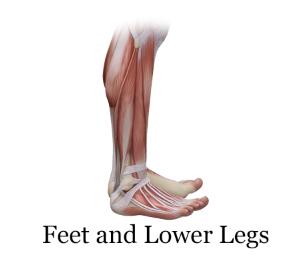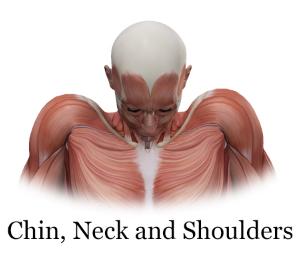
Also known as Jacobson's muscle relaxation, progressive muscle relaxation (PMR) was developed by Edmond Jacobson in the 1920s. Jacobson's original 200 exercises over time has been condensed into ten to fifteen exercises. With a bit of instruction and practice, these techniques can be performed at home and have been found to be effective for the reduction of stress levels, stress-related insomnia, and illnesses such as cancer, diabetes, and asthma.
PMR Overview
A form of deep muscle relaxation, PMR is an effective way to reduce the physical effects that stress has on your body. PMR is based on the technique of tensing and relaxing various muscle groups, one group at a time, throughout your body.
According to the American Holistic Nurses Association, there are some facts to keep in mind as you practice progressive muscle relaxation:
- PMR works because stress creates tension in the muscles. When we tense our muscles, we discharge this energy and the muscles will return to a relaxed state.
- PMR helps you learn how your body is feeling, and teaches you how to gain more physical control over your body.
- As you practice these techniques, you learn more about your muscles, how they feel, level of tension, and how to isolate different muscles. People actually carry a lot of stress in their muscles throughout the day without realizing it. PMR teaches users to recognize when muscles really are in a relaxed state.
- While the techniques for PMR can vary widely in terms of where to start (arms, head, or feet), the basic technique of starting with a couple of deep breaths, then tensing and relaxing groups of muscles and working your way up or down the body is essentially the same. Once you learn the technique, you can do what comes naturally to you.
- Learning the technique of PMR requires practice and patience. Always keep in mind the more you practice the better you will become and before long you will be a master of progressive muscle relaxation.
Preparation
To prepare for PMR, you must find a comfortable place to lie down.
- Bring your attention to your body.
- Breathe deeply and slowly through your nose, extending your belly rather than your chest to breathe. The video below will demonstrate this type of breathing for you. Observe how it feels to breathe in deeply.
- Exhale slowly. Visualize the tension exiting your body through your mouth. Note how this feels.
- Take two or three more breaths, depending on what is comfortable for you.
Exercise Procedures and Muscle Groups
Progressive muscle relaxation involves tensing, or tightening, the muscles of a specific body area. The University of Michigan Health System suggests the following procedure for performing PMR exercise and muscle groups to isolate.
- Tense the muscles in the muscle group.
- Hold the tension in the muscles for five to ten seconds. Pay attention to how the tenseness feels in your muscles. If you feel discomfort, you can do it for less time and still get results.
- Take a deep breath in.
- As you release your muscles, breathe out. Say in your mind a phrase such as, "Relax" or "Let go." Pay attention to how relaxed the muscle feels. Compare it with how it felt before you did the exercise.
For each group, follow the suggestions on the movements to make in order to isolate the group of muscles. Remember, for each group, tense, hold, then release.
- Feet and Lower Legs: Push your heels down (your toes will go up), and tense the muscles in your toes, feet, ankles, and calf muscles.

- Knees and Thighs: Keep your legs straight and squeeze your knees together, contracting all the muscles from your knees to your thighs.

- Hips and Buttocks: Clench the muscles in your buttocks together.

- Stomach: While breathing in, pull the stomach muscles towards the spine and tense.

- Upper Back: Squeeze together your shoulder blade towards your spine.

- Arms and Hands: Clench your hands into a fist and raise your arms in front of you, tensing the muscles in your arms.

- Chin, Neck, and Shoulders: Lower your chin to your chest as you push your shoulders up into a shrug.

- Jaw and Face: Bite down with your upper and lower jaws tensing the jaw muscles, make a tense smile, wrinkle your nose, and squeeze your eyes closed all at once.

- Forehead: Raise your eyebrows up as if you're surprised and tense the muscles above your eyes. You might feel this is easier to achieve if you frown.

Feel the relaxation from head to toe. Notice how the muscles feel when totally relaxed.

If any areas still feel tense, concentrate on those areas of the body either by clenching that group of muscles and releasing them, or letting go of the muscles even more to relax them, or both.
Shortened Version of PMR
Once you have mastered the technique of PMR, you should practice it every day. However, a shortened version of PMR involves working four areas of muscle groups that cover the entire body.
- Legs and feet
- Chest and stomach
- Shoulders, back, neck and arms
- Face
A Few Words of Caution
Some people might have difficulty practicing or getting benefit from PMR, so some precautions should be observed:
- Do not eat, drink alcohol, smoke, or take drugs before your PMR session.
- If you have any medical problems or conditions, it is always best to check with your physician before starting a program of PMR. For example, a person with neck or back injury might be excluded from using PMR. A doctor can tell you if this would benefit you, or help you modify your program if necessary.
- Once you have finished a session of PMR, never stand up quickly. Take a few seconds and relax keeping your eyes closed. Standing up too quickly can result in a drop in blood pressure (called "orthostatic hypotension") and fainting is possible. Try counting slowly down from ten, timed to deep breaths.
- Be very careful that you do not hurt yourself, especially when tensing the muscles in the back, neck and feet. Muscle strain is possible if you tense them too hard.
Practice for Health Benefits
Progressive muscle relaxation is an excellent way to control the physical and mental effects that stress has on your body. Learning the technique takes a bit of practice. However, mastering these techniques can be achieved quickly, be learned and performed at home, and be beneficial for your health.







